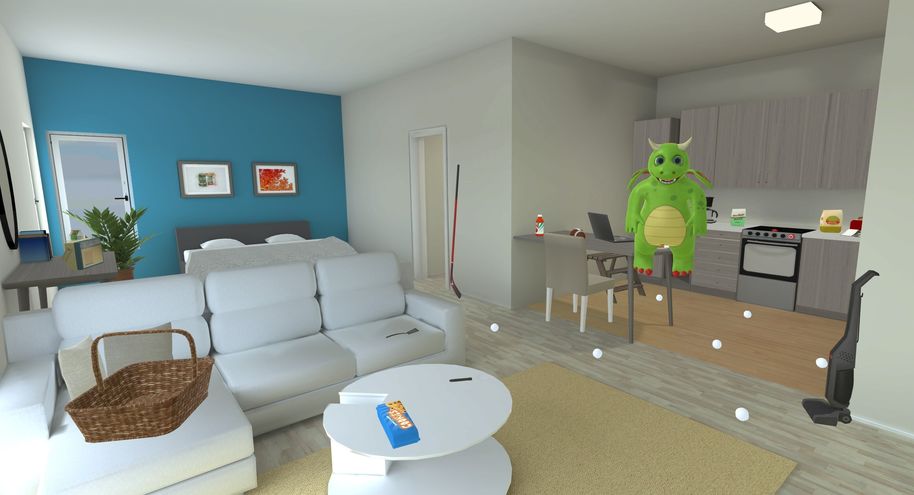ADHD currently affects roughly six percent of the world’s children.
A group of researchers based out of Aalto University, Åbo Akademi Universit, and the University of Helsinki has developed a VR game that can supposedly help diagnose attention-deficit hyperactivity disorder (ADHD) in children. The kid-friendly interactive experience uses a combination of machine learning and eye-tracking to effectively identify a variety of ADHD symptoms.
Referred to as Executive Performance in Everyday Living (EPELI), the game immerses users in a virtual apartment where they must complete a series of “everyday tasks.” In order to succeed, users need to think ahead and remember their instructions while ignoring any and all distractions in the process.
Currently, the most popular method for detecting ADHD symptoms is the Continuous Performance Task (CPT) test, during which participants watch a sequence of letters appear on a screen and press a button anytime a letter other than ‘X’ appears. According to researchers, EPELI could provide a more effective solution for diagnosing ADHD compared to a CPT test while better motivating users.
“Those who are interested can use EPELI as an aid in their clinical work” said Erik Seesjärvi, a doctoral researcher based out of the University of Helsinki and a clinical neuropsychologist at Helsinki University Hospital (HUH). “The experience has been very positive. All of the neuropsychologists who answered a feedback survey after the first pilot said they had benefit from using virtual reality methods as a complementary tool in their work.”
That’s just the tip of the iceberg, however. The team recently added eye-tracking to the game, allowing them to better diagnose attention deficits by tracking a user’s eye movements. In a new study, 37 children diagnosed with ADHD and 36 children in a control group played EPELI followed by a simple shooting gallery game called Shoot the Target and the results were interesting.
“We tracked children’s natural eye movements as they performed different tasks in a virtual reality game, and this proved to be an effective way of detecting ADHD symptoms,” added Liya Merzon, a doctoral researcher at Aalto University. “The ADHD children’s gaze paused longer on different objects in the environment, and their gaze jumped faster and more often from one spot to another. This might indicate a delay in visual system development and poorer information processing than other children.”
In addition to diagnosing ADHD in children, researchers claim that EPELI could eventually be used to evaluate autism, brain trauma, adult ADHD, cerebral palsy, and more. “Our partners in Geneva are studying aging-related diseases,” added Project lead Juha Salmitaival. “Key opportunities on the horizon include early detection of Parkinson’s and Alzheimer’s diseases.”
For more information on EPELI visit here. You can also check out the research team’s full study here.
Feature Image Credit: Peili Vision Oy
The post Study Shows How VR Could Help Diagnose ADHD appeared first on VRScout.





